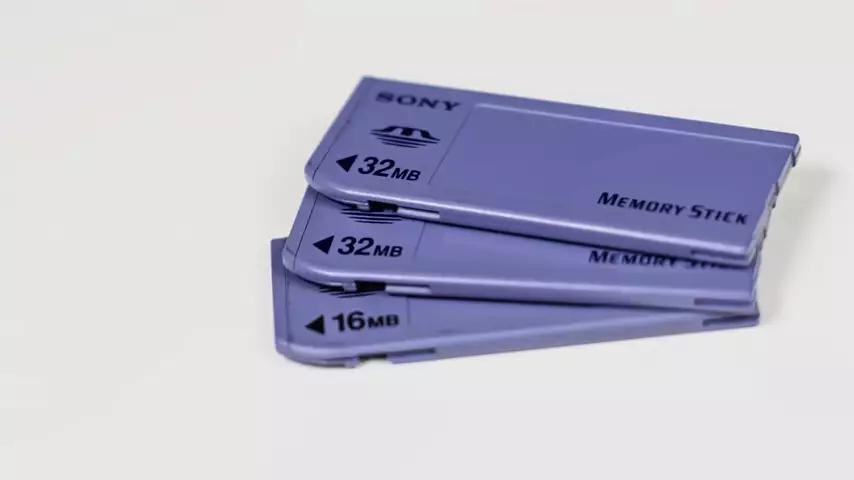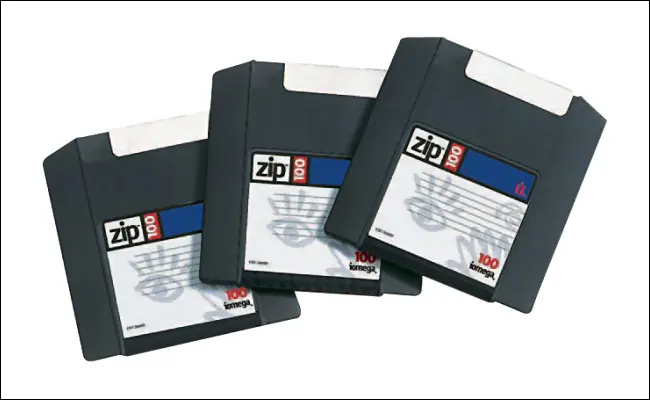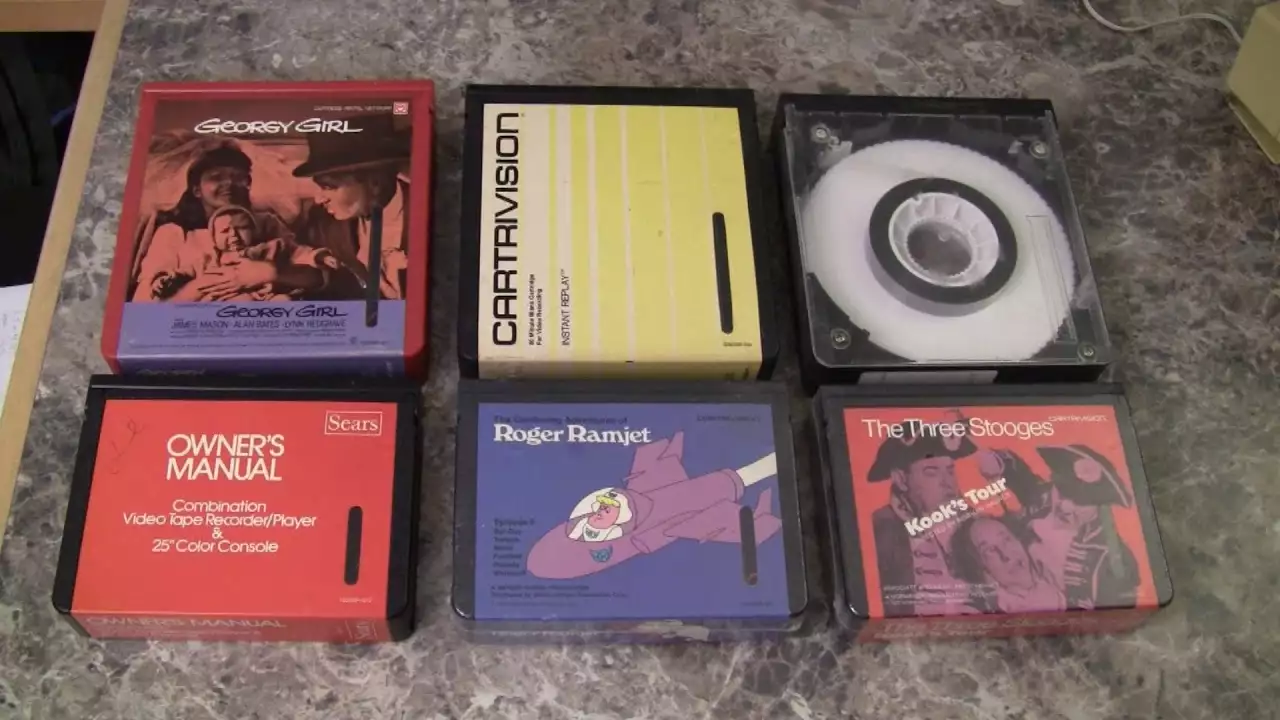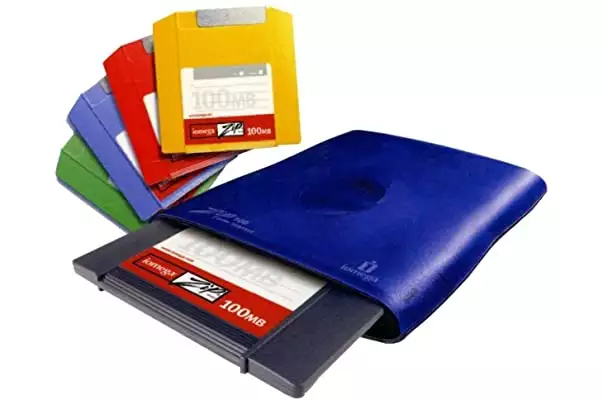Memory sticks, zip drives, Cartrivision. For decades tech companies have continued to think proprietary storage formats that only work with their own stuff are, for some reason, a good idea. Even though they tend to fail after a few years. So let's look at three "next big things" that went the way of Betamax.
First off, the Memory Stick from Sony which, how did they manage to trademark such a generic name?  These bad boys first appeared back in 1998 when standalone digital cameras were first starting to catch on and Sony digital cameras in particular were very popular. So the brat Sony, Hey, what if we start selling our own flash memory that people will have to buy to keep using our cameras? I mean, it worked great for the PlayStation and that's exactly what they did.
These bad boys first appeared back in 1998 when standalone digital cameras were first starting to catch on and Sony digital cameras in particular were very popular. So the brat Sony, Hey, what if we start selling our own flash memory that people will have to buy to keep using our cameras? I mean, it worked great for the PlayStation and that's exactly what they did.
The memory stick wasn't vastly superior technologically to the more open compact flash or smart media cards that were also common at the time, but they quickly became popular due to how many people had Sony cameras. And they also worked in Sony's digital Walkman players of the PlayStation portable, and even their lineup of robot dogs that helped them grab a good chunk of flash memory market share in the early two thousands.
See also: google pixelbook 12in
But it all changed once the now familiar SD card gaining popularity because unlike memory stick it was an open standard whose developers pushed hard to have it adopted in gadgets like other cameras. And especially in smartphones.
As those became more mainstream people bought SD cards to expand their storage because cat photos and the higher the volume of SD card sales, the cheap were driven, meaning that memory stick was eventually pushed aside and even soy started selling cameras with SD support in 2010.
Next up is I Omega's zip disc, which was quite different from the memory stick in that it served a purpose other than just lining someone's pockets.  The thing looks like a bigger chunkier loppy discet which might lead you to think that it was like a floppy that held more data which actually is precisely what it was, instead of a 1.44 megabyte disc that spun at 300 RPM. The original zip disc held 100 megabytes and spun it nearly 3000 RPM for faster data transfers. And we also got 250 and 750 megabyte variants later.
The thing looks like a bigger chunkier loppy discet which might lead you to think that it was like a floppy that held more data which actually is precisely what it was, instead of a 1.44 megabyte disc that spun at 300 RPM. The original zip disc held 100 megabytes and spun it nearly 3000 RPM for faster data transfers. And we also got 250 and 750 megabyte variants later.
The zip disk also came out at a pretty sensible time, 1994 when it was becoming very common for folks to work with files much larger than what a floppy could hold but there wasn't a good alternative yet. This led to the zip disk enjoying a burst of popular through the mid 1990s to the point where quite a few prebuilt PCs actually came with internal zip drives especially PowerMax helping zip become a very popular format with graphic designers, but despite zip disks undeniable utility and support for several different interfaces sales entered a terminal decline in 1999.
This was when recordable and re writeable CDs were hitting the mainstream and blank CDs and burners were much cheaper than the proprietary zip equipment that only one company made, not to mention the notorious click of death that destroyed your data.
Finally, here's something from way back that has a surprising parallel to modern DRM, Cartrivision.  This was the original movie rental format and having debuted in 1972, it actually predated both VHS and Betamax. Unfortunately, Cartrivision sucked big time. For starters, you couldn't buy a separate VCR like player for it and hook it up to your TV. You actually had to buy a combination TV with the player built in which originally sold for $1,350 that's equivalent to nearly $10,000 today. And yet you didn't even get a particularly good rental or watching experience. Not only was the video quality notoriously bad due to space constraints on the cartridges, but if you wanted to rent a movie, you had to go to a store and order it from a catalog, then go home and wait for the title that you've requested to arrive by mail. What kind of instant gratification is that? It's like a less convenient version of Netflix's original DVD delivery service.
This was the original movie rental format and having debuted in 1972, it actually predated both VHS and Betamax. Unfortunately, Cartrivision sucked big time. For starters, you couldn't buy a separate VCR like player for it and hook it up to your TV. You actually had to buy a combination TV with the player built in which originally sold for $1,350 that's equivalent to nearly $10,000 today. And yet you didn't even get a particularly good rental or watching experience. Not only was the video quality notoriously bad due to space constraints on the cartridges, but if you wanted to rent a movie, you had to go to a store and order it from a catalog, then go home and wait for the title that you've requested to arrive by mail. What kind of instant gratification is that? It's like a less convenient version of Netflix's original DVD delivery service.
These rental cartridges also had an infuriating limitation. You couldn't rewind them, similar to how modern digital rentals and forced viewing limits. This was a method to ensure that you could only watch the movie one time before you returned it to the store, where they had a special machine that could rewind the tape for the next. Excuse me, I mean viewer, and to top it all off the cartridges themselves were notoriously fragile. If you left them someplace, that was a little too humid, they would disintegrate in a matter of months. So it's not all that surprising that Cartrivision was discontinued after only 13 months.
Are there any other tech failures from yester year that you'd like us to explore? Let us know down in the comments.


No comments yet